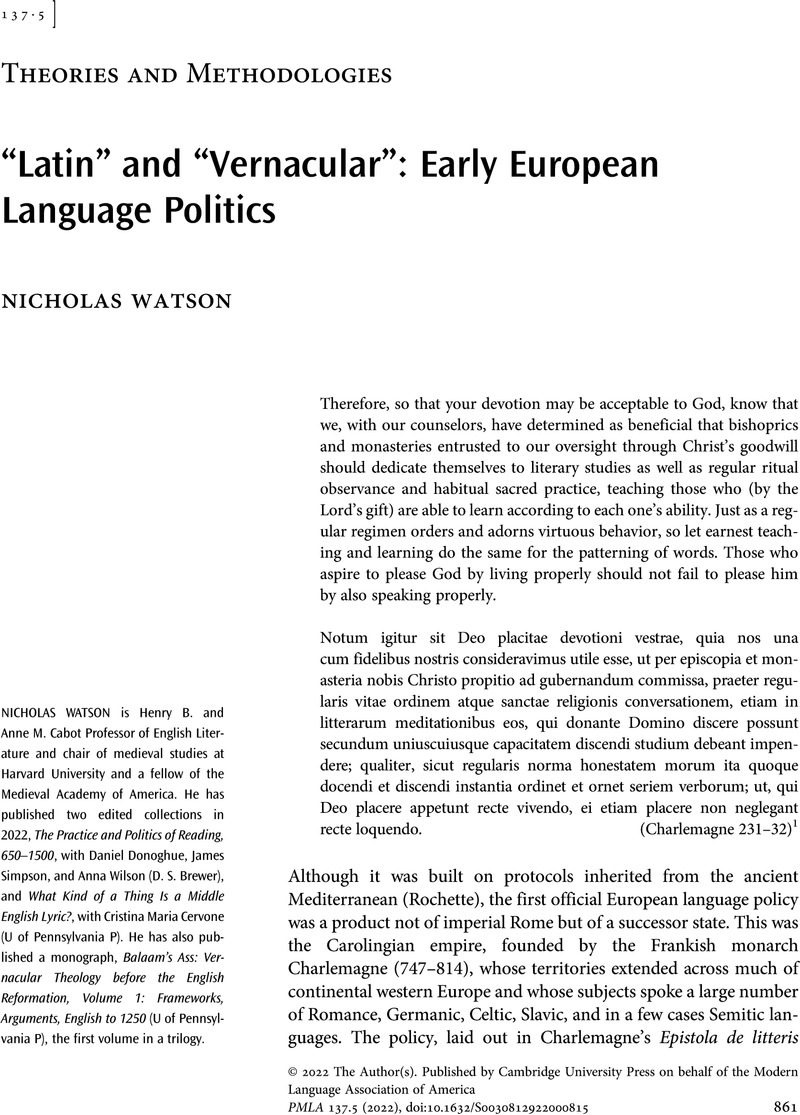Grondeux, Anne. “La notion de langue maternelle et son apparition au Moyen Âge.”
Zwischen Babel und Pfingesten / Entre Babel et Pentecôte: Différences linguistiques et communication orale avant la modernité (VIII–XVI siècle), edited by Peter von Moos, LIT Verlag,
2008, pp.
339–56.
Google Scholar 